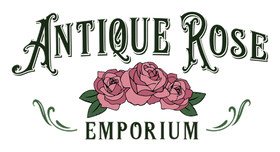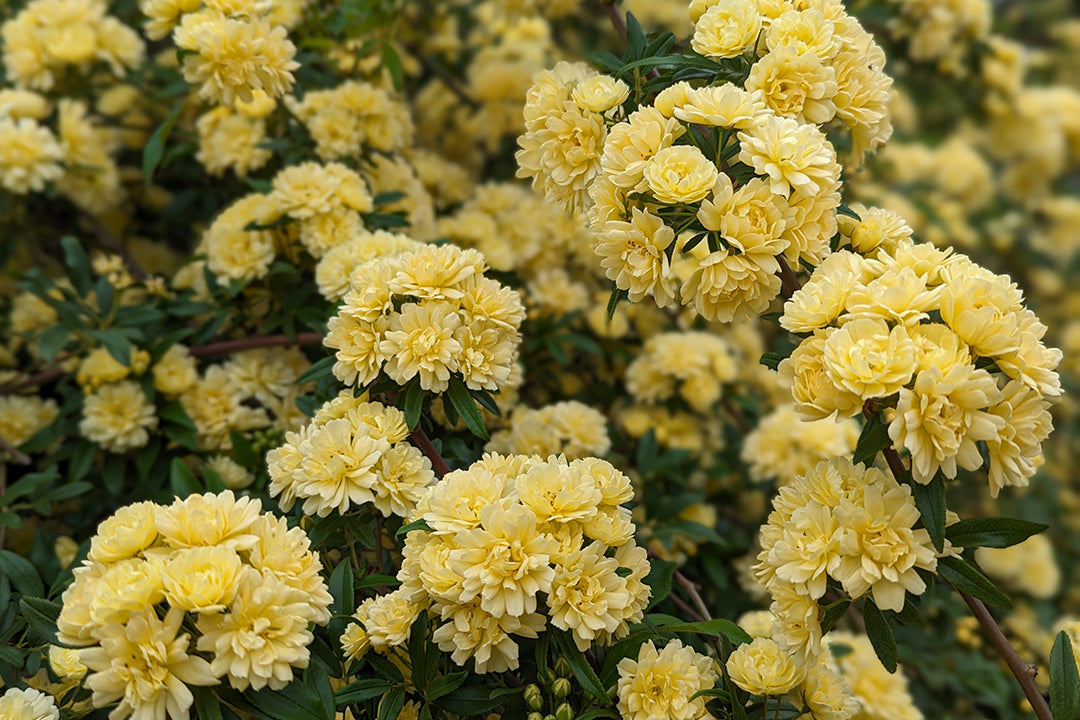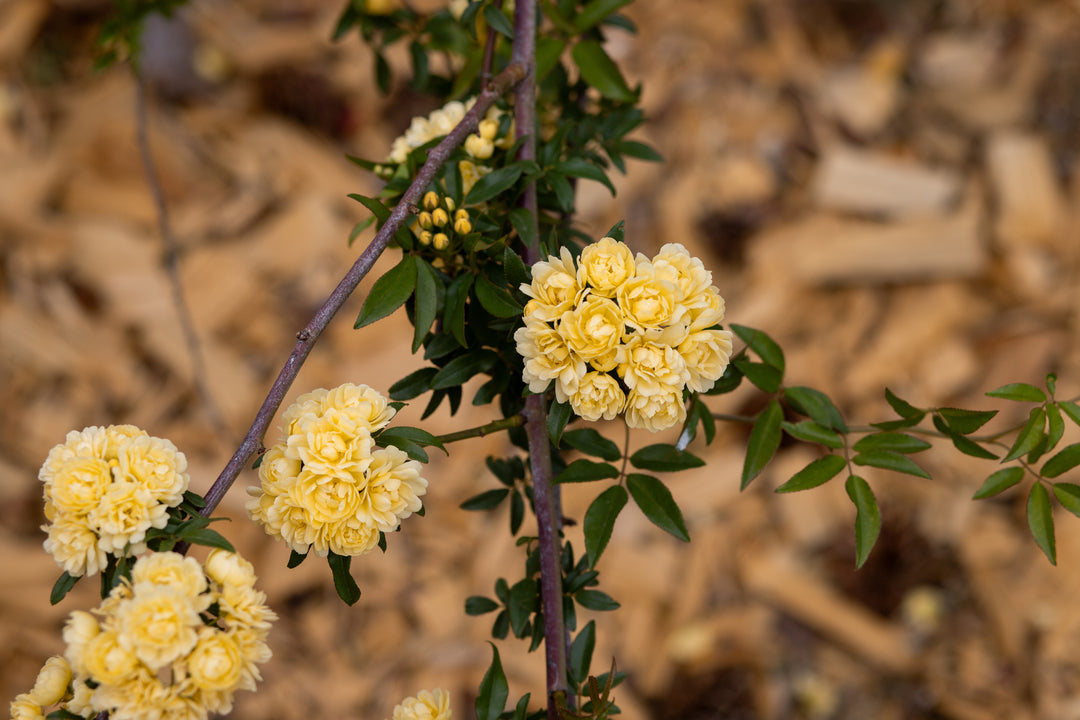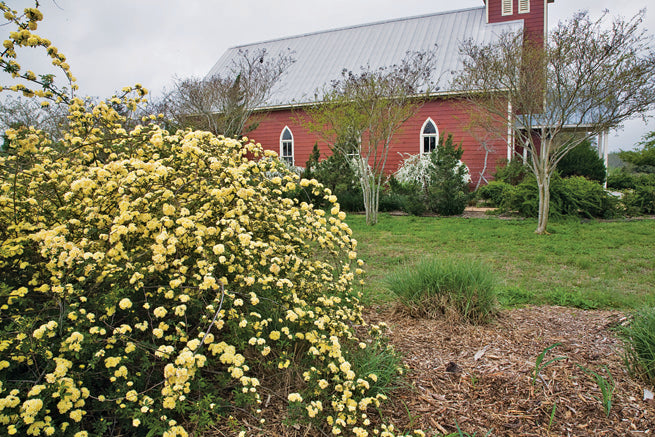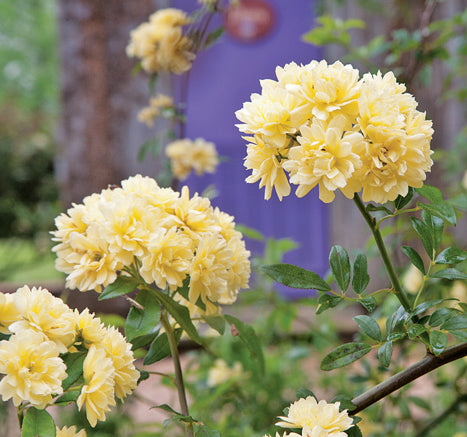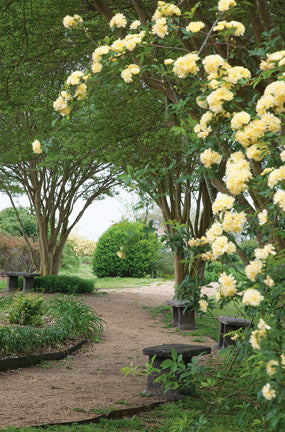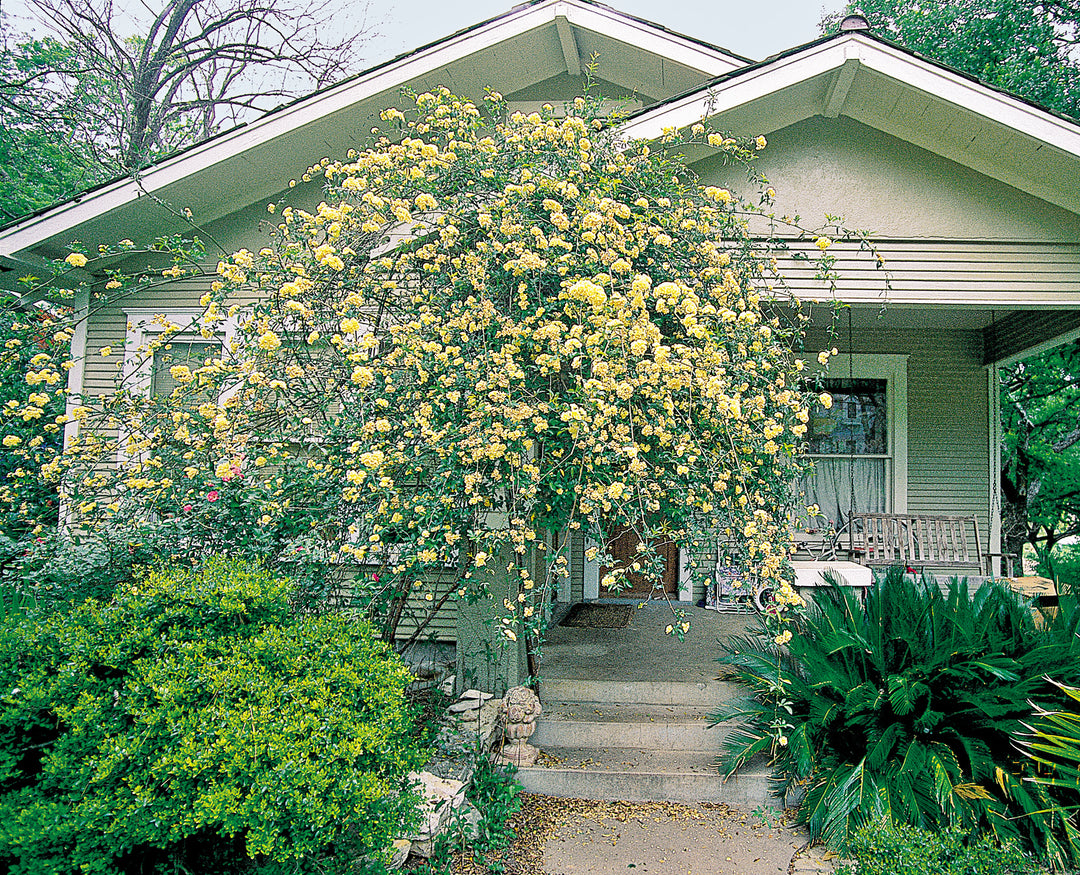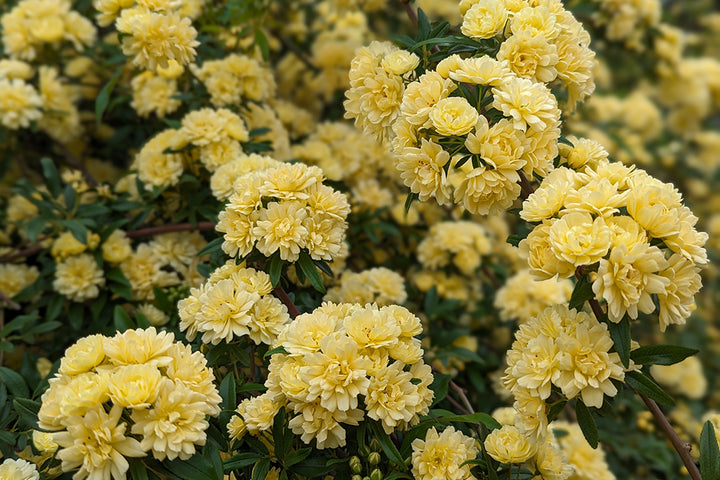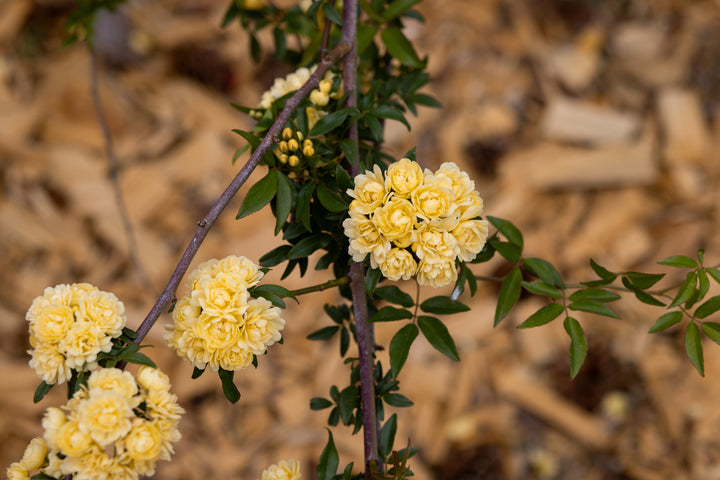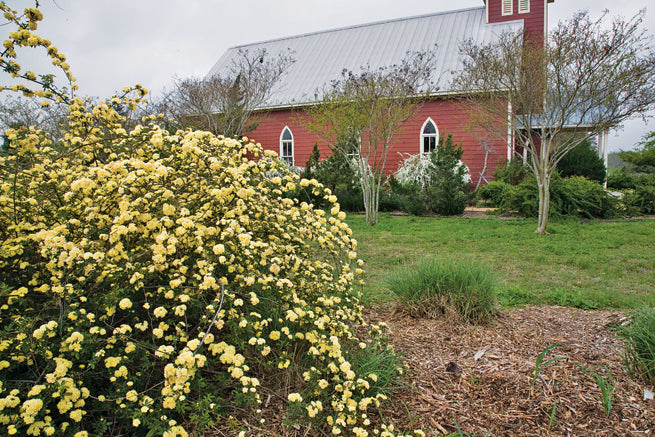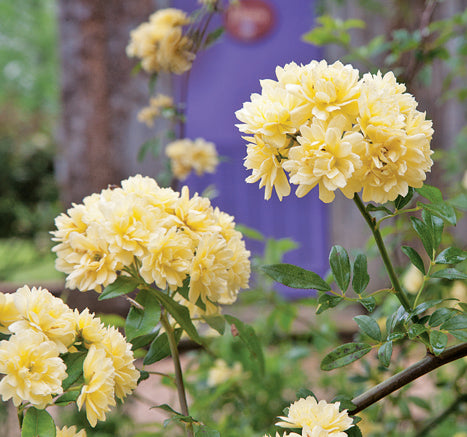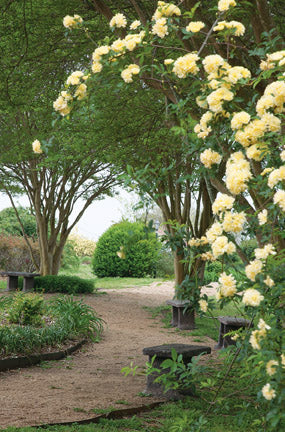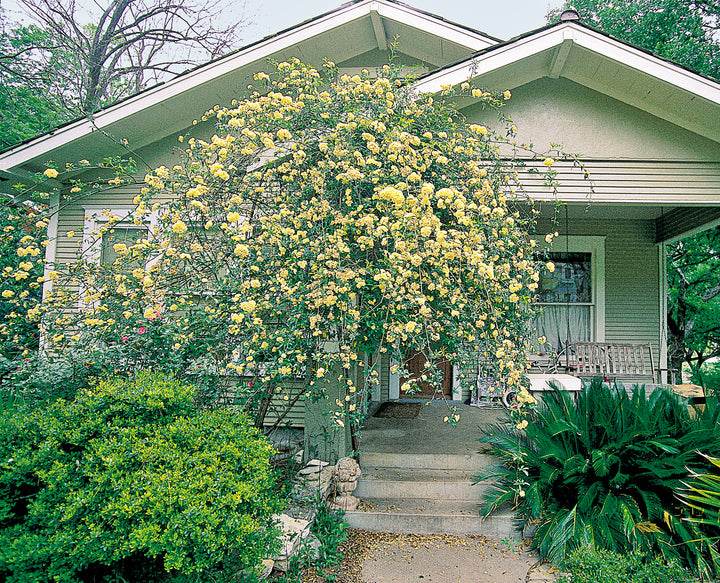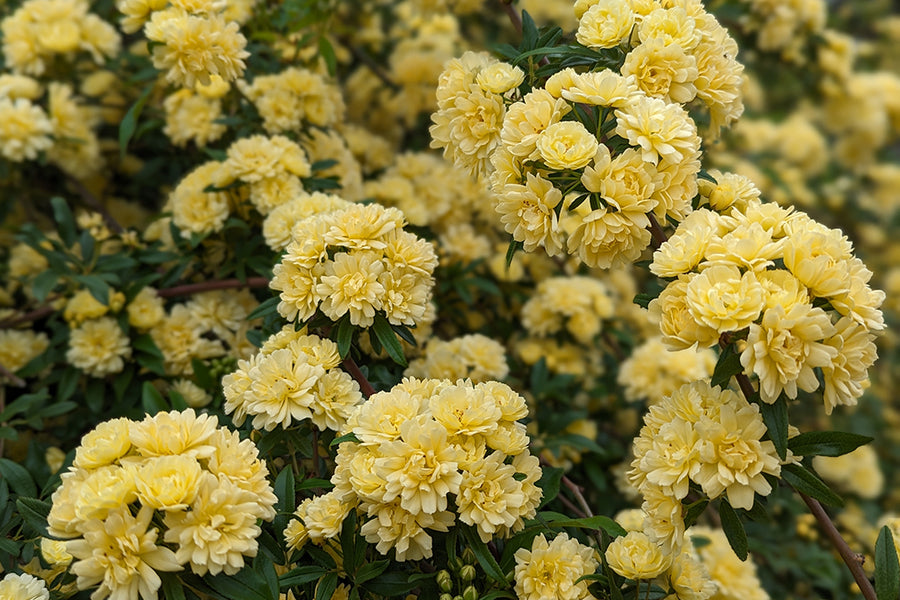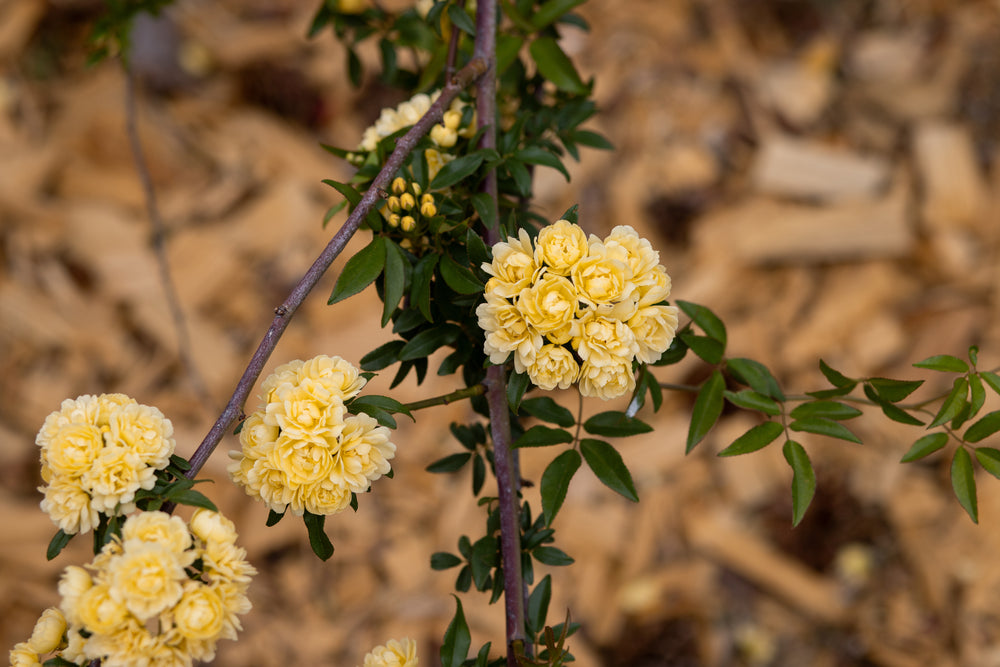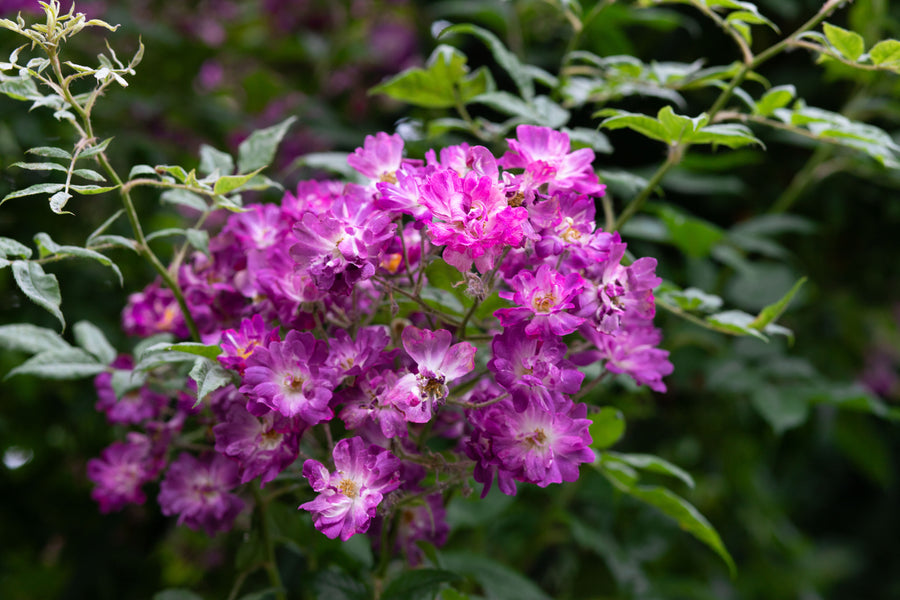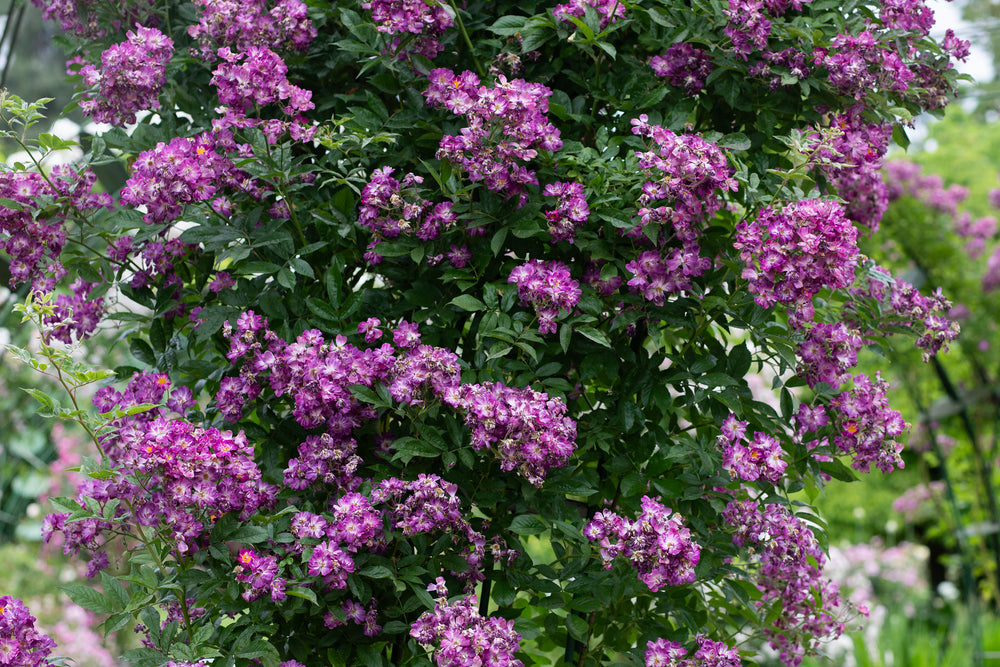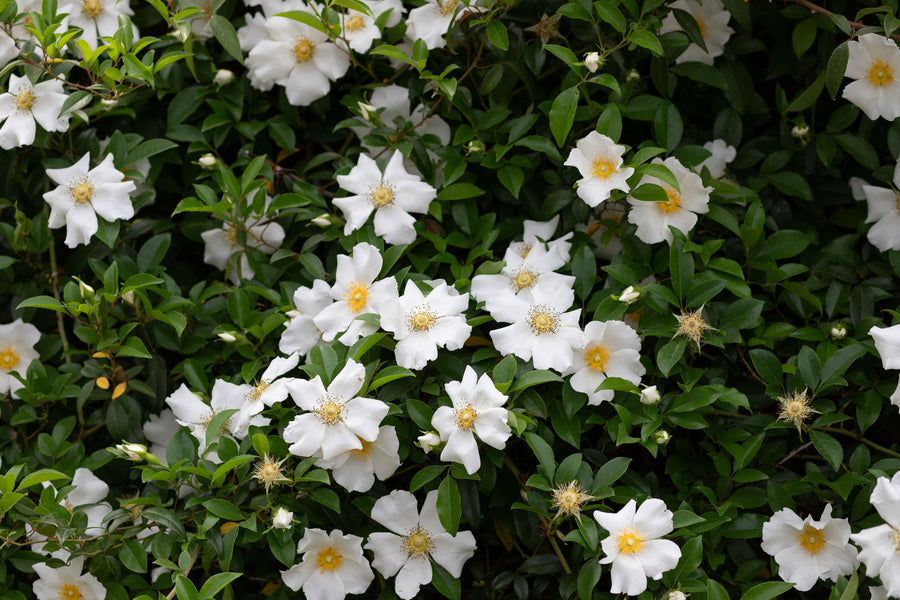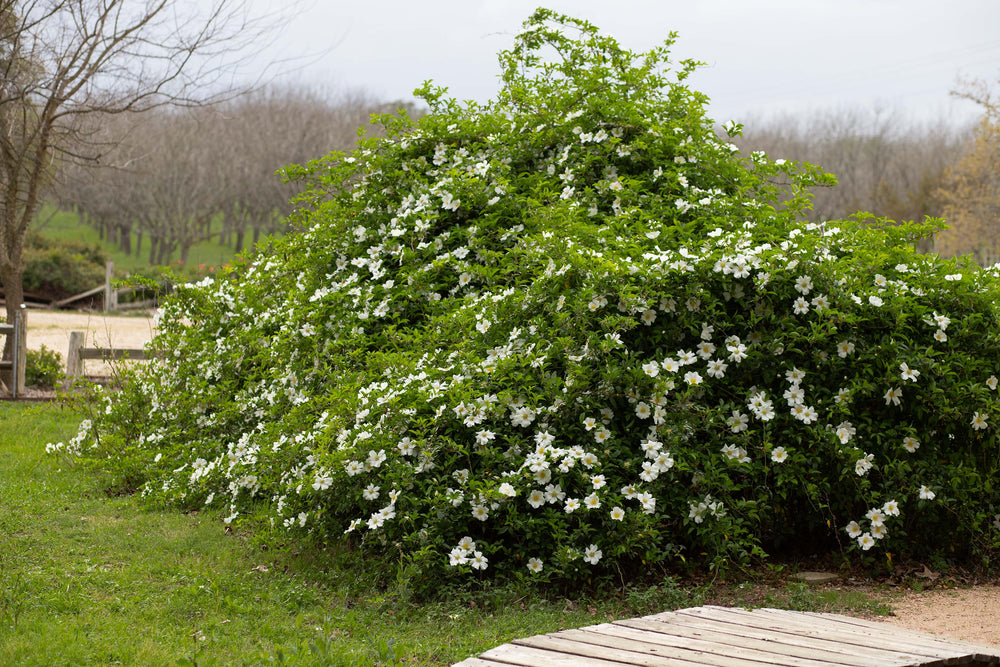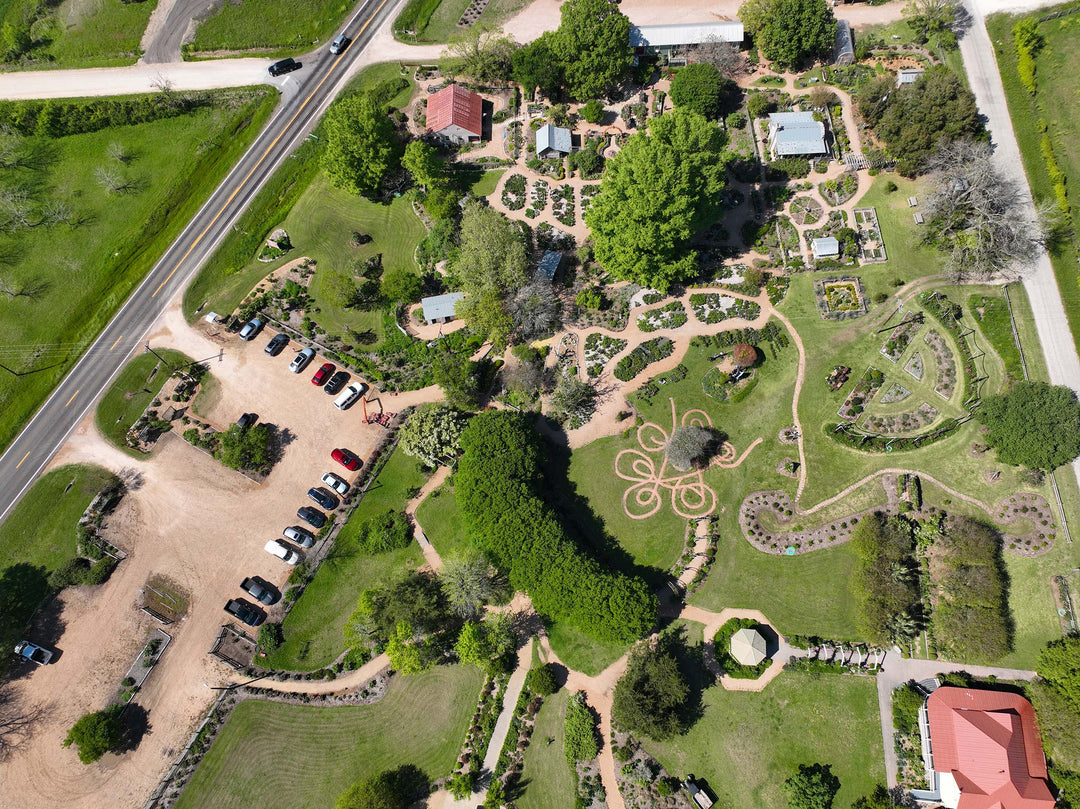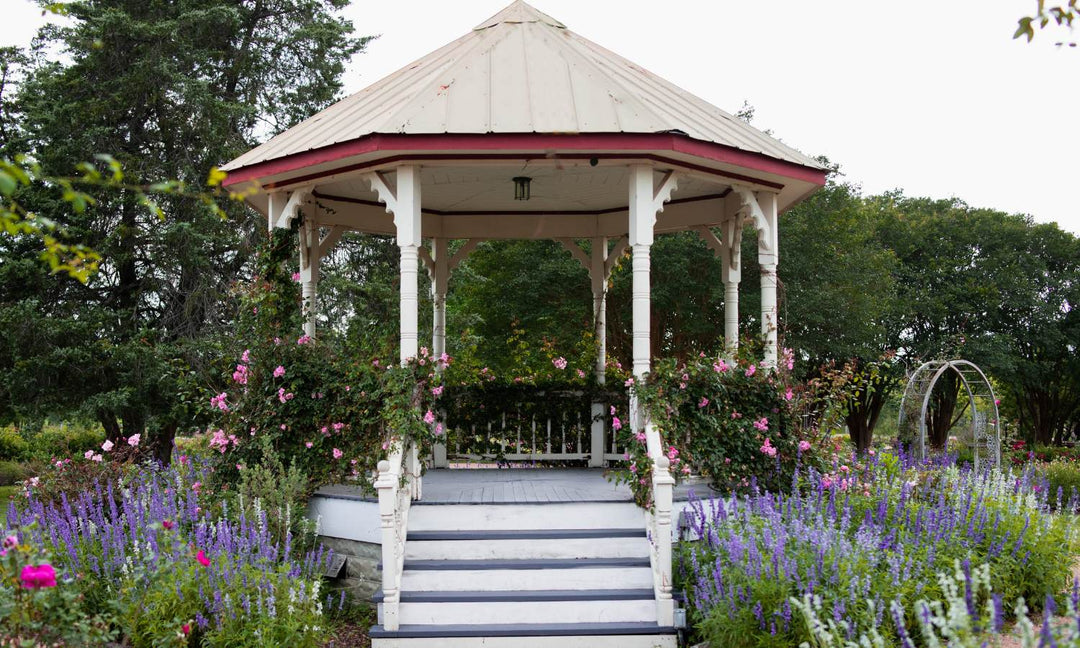Name: Lady Banks Yellow
Class: Species
Color: yellow
Growth Habit: Climber
Fragrant: no
Hips: no
Blooms: Once
Climate Zones: zone 8, zone 9, zone 10, zone 11
Mature Height: 20ft
Year of Introduction: 1824
We ship from September to May.
At checkout, you may choose your desired delivery timeframe. This is a very important step!
We do ask that you make sure the weather in your zone is suitable for receiving and plating your roses.
Antique Rose Emporium is in Texas and the December weather can be anywhere from below freezing to 80 degrees Fahrenheit. But our weather is extremely mild compared to the northern United States.
We want you to have the best success possible with your roses and ask that you let us care for them over the winter and receive them at the time that you plan to plant.
Please ensure that you are not experiencing freezing temperatures and the ground is not frozen when you plan to receive your rose.

